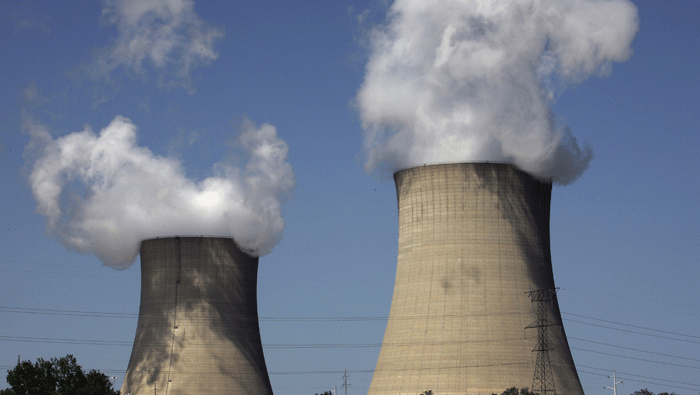
The Earth today is more than 1°C hotter than it was in pre-industrial times, and the terrible symptoms of its fever are already showing. This year alone, back-to-back hurricanes have devastated Caribbean islands, monsoon flooding has displaced tens of millions in South Asia, and fires have raged on nearly every continent. Pulling the planet back from the brink could not be more urgent.
Those of us who live on the front lines of climate change – on archipelagos, small islands, coastal lowlands, and rapidly desertifying plains – can’t afford to wait and see what another degree of warming will bring. Already, far too many lives and livelihoods are being lost.
People are being uprooted, and vital resources are becoming increasingly scarce, while those suffering the most severe consequences of climate change are also among those who have done the least to cause it.
That is why the Philippines used its chairmanship of the Climate Vulnerable Forum (CVF) – an alliance of the 48 countries that stand to bear the brunt of climate change – to fight to ensure that the 2015 Paris climate agreement aimed explicitly to cap global warming at 1.5°C above pre-industrial levels.
For us, 1.5°C isn’t merely a symbolic or “aspirational” number to be plugged into international agreements; it is an existential limit.
If global temperatures rise above that level, the places we call home – and many other homes on this planet – will become uninhabitable or even disappear completely.
When we first introduced the 1.5°C target back in 2009, we met substantial resistance. Climate-change deniers – those who refuse to believe the science of human-induced global warming – continue to dismiss any such effort to stem the rise in the planet’s temperature as futile and unnecessary. But even well-meaning climate advocates and policymakers often opposed the 1.5°C target, arguing that, according to the science, humans had already emitted enough greenhouse gases to make meeting that goal virtually impossible.
Yet, on this front, the science is not as clear-cut as it might have seemed. According to a recent paper published in Nature, the world’s remaining “carbon budget” – the amount of carbon-dioxide equivalents we can emit before breaching the 1.5°C threshold – is somewhat larger than was previously thought.
This finding is no reason for complacency, as some commentators (not scientists) seem to think. It does not mean that previous climate models were excessively alarmist, or that we can take a more relaxed approach to reining in global warming.
Instead, the paper should inspire – and, indeed, calls for – more immediate, deliberate, and aggressive action to ensure that greenhouse-gas emissions peak within a few years and net-zero emissions are achieved by mid-century.
What would such action look like? Global emissions would need to be reduced by 4-6 per cent every year, until they reached zero. Meanwhile, forest and agricultural lands would have to be restored, so that they could capture and sequester greater amounts of carbon dioxide. Fully decarbonizing our energy and transportation systems in four decades will require a herculean effort, but it is not impossible.
Beyond their environmental consequences, such efforts would generate major economic gains, boosting the middle class in developed countries and pulling hundreds of millions out of poverty in the developing world, including by fueling job creation. The energy transition will lead to massive efficiency savings, while improving the resilience of infrastructure, supply chains, and urban services in developing countries, particularly those in vulnerable regions.
According to a report published last year by the United Nations Development Programme, maintaining the 1.5°C threshold and creating a low-carbon economy would add as much as $12 trillion to global GDP, compared to a scenario in which the world sticks to current policies and emissions-reduction pledges.
Get your essential daily briefing delivered direct to your email inbox with our e-newsletter
The paper asserting that the 1.5°C target is achievable was written by well-respected climate experts and published in a top-ranking journal after extensive peer review. But it is just one paper; there is still a lot more to learn about our capacity to limit global warming.
That is why top scientists are already discussing and debating its findings; their responses will also be published in top journals. That is how scientific research works, and it is why we can trust climate science – and its urgent warnings.
Next year, the Intergovernmental Panel on Climate Change will publish its own meta-analysis of all of the science related to the 1.5°C target, in what promises to be the most comprehensive summary of such research. But we cannot afford to wait for that analysis before taking action.
The members of the CVF have already committed to doing our part, pledging at last year’s UN Climate Change Conference in Marrakech to complete the transition to 100 renewable energy as soon as possible. Our emissions are already among the world’s smallest, but our climate targets are the world’s most ambitious.
But whether the world manages to curb climate change ultimately will depend on the willingness of the largest current and historical emitters of greenhouse gases to fulfill their moral and ethical responsibility to take strong action.
Keeping global temperatures below 1.5°C may not yet be a geophysical impossibility. But, to meet the target, we must ensure that it is not treated as a political and economic impossibility, either. - Project Syndicate